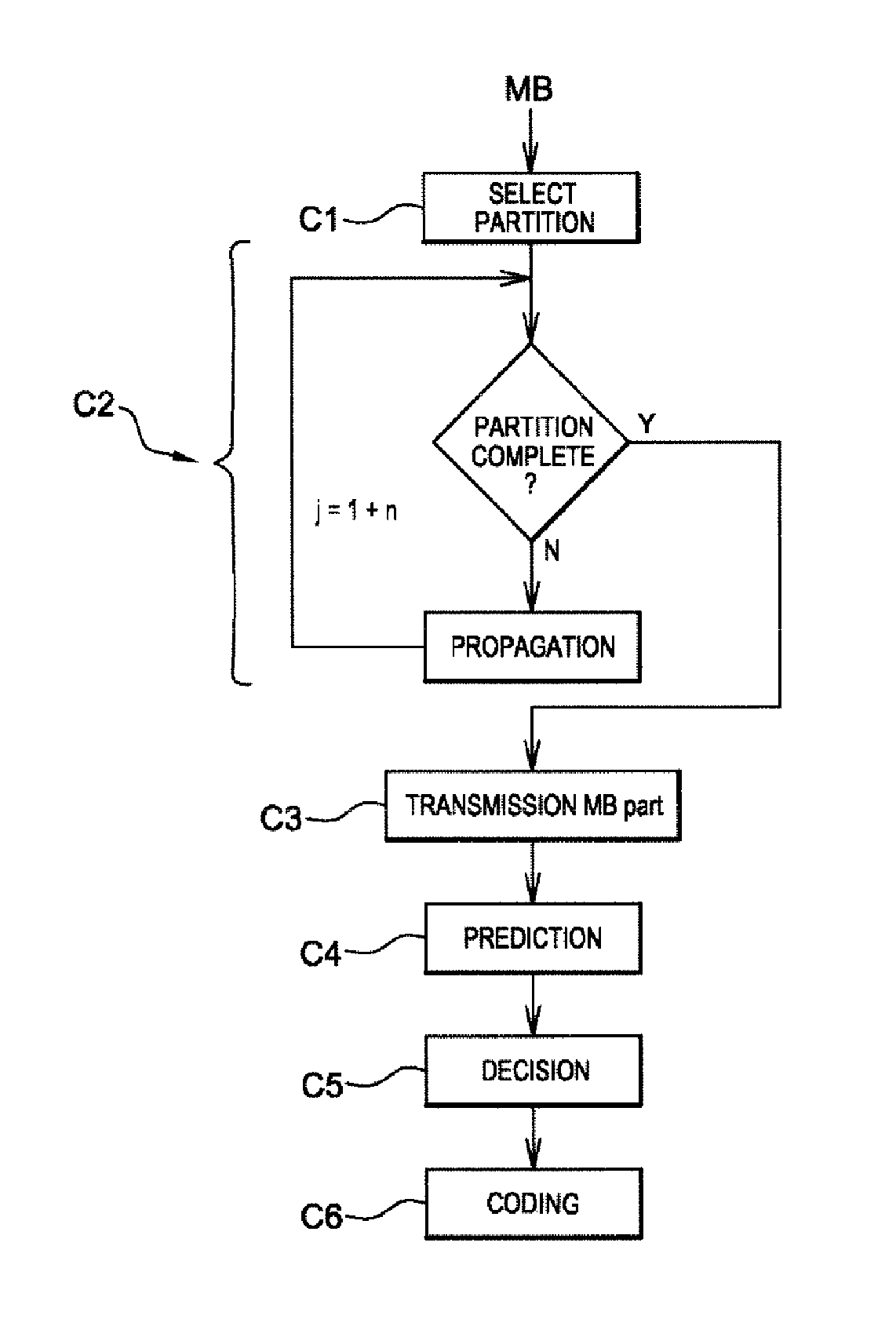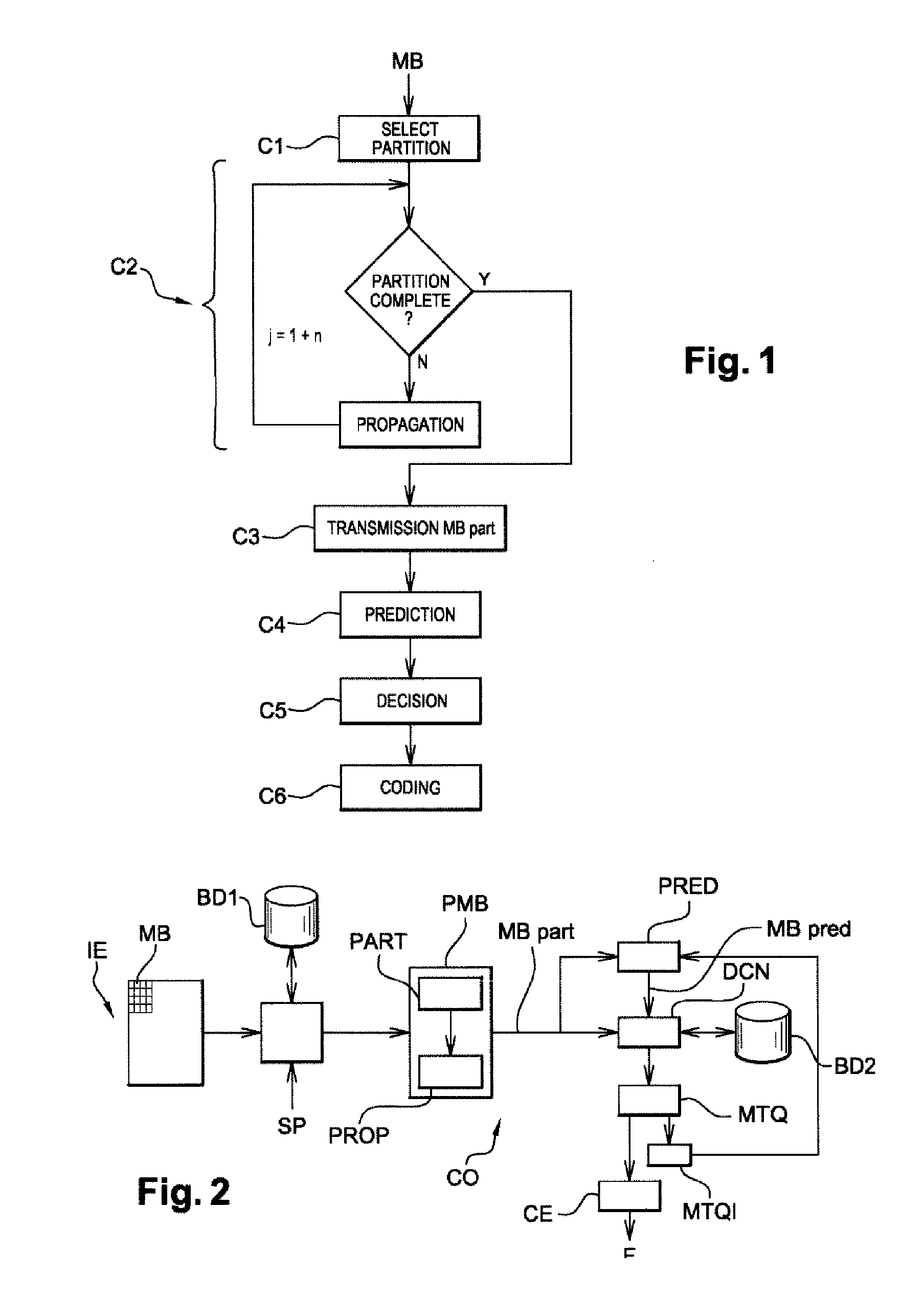Coding and decoding of an image or of a sequence of images sliced into partitions of pixels of linear form
- Summary
- Abstract
- Description
- Claims
- Application Information
AI Technical Summary
Benefits of technology
Problems solved by technology
Method used
Image
Examples
Embodiment Construction
[0065]An embodiment of the invention will now be described, in which the coding method according to the invention is used to code a sequence of images according to a binary stream close to that obtained by coding according to the H.264 / MPEG-4 AVC standard. In this embodiment, the coding method according to the invention is for example implemented in a software or hardware manner by modifications of a coder initially in accordance with the H.264 / MPEG-4 AVC standard. The coding method according to the invention is represented in the form of an algorithm comprising steps C1 to C6, represented in FIG. 1.
[0066]It should be noted that the decoding method according to the invention is symmetrically implemented in a software or hardware manner by modifications of a decoder initially in accordance with the H.264 / MPEG-4 AVC standard.
[0067]According to the embodiment of the invention, the coding method according to the invention is implemented in a coding device CO represented in FIG. 2. The c...
PUM
 Login to View More
Login to View More Abstract
Description
Claims
Application Information
 Login to View More
Login to View More - R&D Engineer
- R&D Manager
- IP Professional
- Industry Leading Data Capabilities
- Powerful AI technology
- Patent DNA Extraction
Browse by: Latest US Patents, China's latest patents, Technical Efficacy Thesaurus, Application Domain, Technology Topic, Popular Technical Reports.
© 2024 PatSnap. All rights reserved.Legal|Privacy policy|Modern Slavery Act Transparency Statement|Sitemap|About US| Contact US: help@patsnap.com










